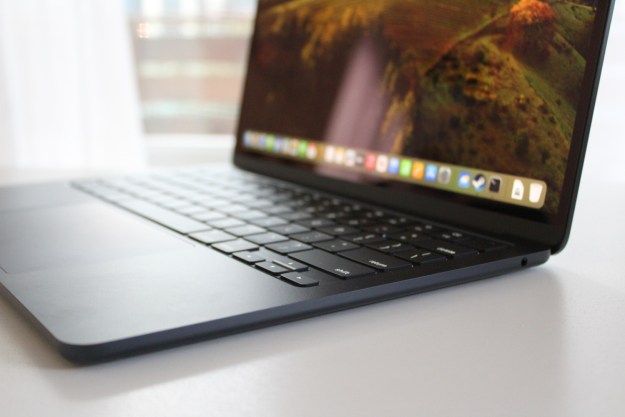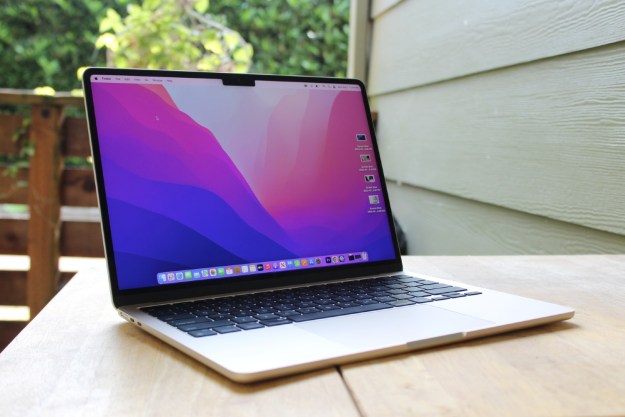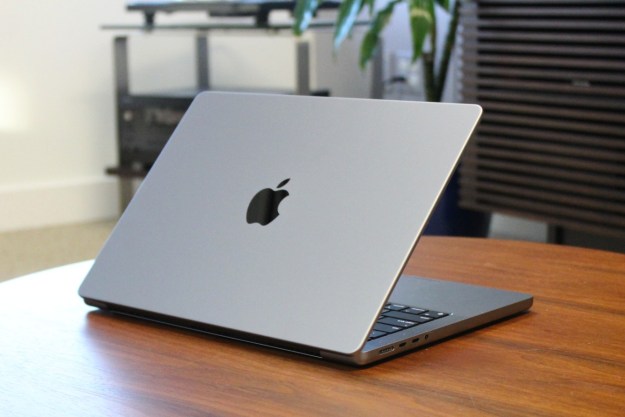
- M2 Max boosts graphics
- Incredible XDR display
- Really impressive speakers
- Good 1080p webcam
- Battery life is even better
- Runs hotter and louder
Editor’s Note: The M2 Max MacBook Pro has been replaced by the M3 Max MacBook Pro.
The 14-inch model is the Goldilocks MacBook Pro. For many, the 13-inch MacBook Pro isn’t powerful enough. It only uses the M2 chip, meaning it’s lacking in the graphics department. Meanwhile, the 16-inch MacBook Pro is quite powerful, but its size can be off-putting.
The 14-inch MacBook Pro, however, sits in the middle as the most balanced option — at least on paper. I tested out the M2 Max model, which might be one of the most powerful 14-inch laptops you can buy. Even with some of its thermal issues, the 14-inch MacBook Pro remains a stellar option for content creators, especially if you want to take your work on the go.
A stellar design

There’s so much I like about the MacBook Pro that it’s hard to know where to start. Most of my favorite aspects about this laptop haven’t changed with the 2023 update, whether that’s the bassy speakers, the impeccable build quality, or the world-class keyboard. The past two years haven’t made these features feel outdated — not even slightly.
Or take the screen, for example. It’s still using the same 14-inch Liquid Retina XDR panel as the 2021 model — and it’s still unchallenged. There’s just no other laptop has the entire package of brightness, color, and HDR performance. Even the recent glut of mini-LED and OLED gaming laptops coming out this year don’t get quite as bright as the 1600 nits of the MacBook Pro. Apple’s still way ahead of the game.
Ports are another strong suit for the 14-inch MacBook Pro. And while the ports themselves haven’t changed, Apple has updated the connectivity up to the latest standards. The MagSafe 3 charging, three Thunderbolt 4 ports, and full-size SD card slot are still here, but the HDMI port has been bumped to HDMI 2.1. Wireless connectivity is also now at Bluetooth 5.3 and Wi-Fi 6E, which is what you’ll find in most Windows laptops coming out this year too.
The webcam is one aspect where the 14-inch MacBook Pro doesn’t blow the competition out of the water. It hasn’t been upgraded this time, keeping the same 1080p resolution. In 2021, having a 1080p webcam was more of a novelty — but in 2023, it’s become the norm (even on cheaper laptops like the MacBook Air). And while Apple’s software solution is great, there are now higher-resolution laptop webcams out there that provide a sharper videoconferencing experience. And remember, you still have to deal with MacBook Pro’s massive notch up top, which still doesn’t have Face ID in it. Boo.
The SSD controversy
There’s an important issue with the SSDs of these MacBook Pros, and it’s the same one that plagued the other M2 Macs. With all its base configurations, Apple has decided to cut a corner by including a much slower SSD. When you choose a 512GB configuration of the MacBook Pro, it comes with just a single NAND chip, which drastically reduces the read and write speeds of the storage.
This was the case with the 256GB M2 MacBooks, but I was particularly disappointed to hear that Apple had continued that trend with the 14-inch and 16-inch MacBook Pros. It’s still fast storage, but you’ll get slower file transfers than with the 2021 model. Even worse, Apple does not indicate that you’ll see a difference in performance when changing storage capacity.
My own review unit, however, came with 2TB of storage, and it was blazing fast, so I can’t complain. It still frustrates me that Apple won’t be more transparent, though.
The M2 Max shines
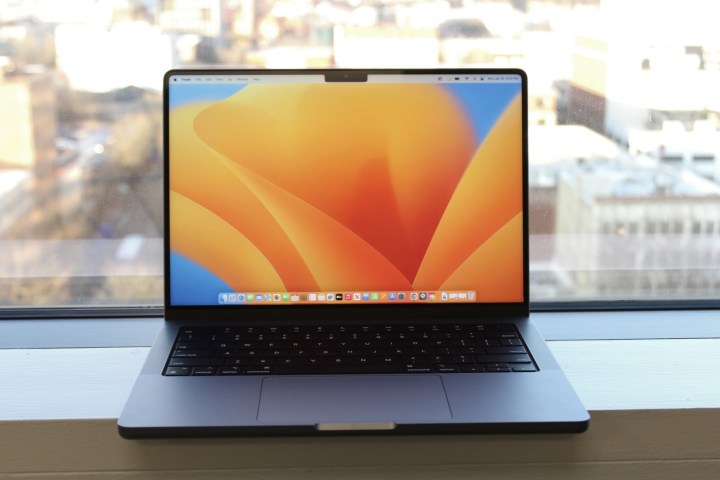
Apple’s approach to improving performance this time around? Extra cores. There are more CPU cores and more GPU cores — and the result is an expected jump in performance. The 14-inch model offers a unique configuration that the 16-inch model lacks: a $1,999 entry-level model with just a 10-core CPU and a 16-core GPU.
While I’m curious how that one performs, the one Apple sent me is the most powerful option, the M2 Max model. This one has the 12-core CPU, but also the monster 38-core GPU. My configuration also happened to come with 64GB of memory and 2TB of storage. Notably, my configuration didn’t come with the new 96GB of unified memory, which is only available if you get the 38-core GPU.
It’s hard to complain when performance is already this strong.
Let’s start with CPU performance. With two more efficiency cores than the standard M2 chips, you can expect better multi-core performance. That held true in tests like Geekbench 5 and Cinebench R23, where the M2 Max MacBook Pro 14-inch hit a new record in multi-core for a 14-inch laptop. In fact, the only laptop we’ve tested that beat it was a massive 17-inch gaming laptop — the MSI GT77 Titan with the Core i9-12900HX. So yeah, it’s not a massive leap ahead, but it’s still impressive.
These new MacBooks Pros were supposedly going to push higher frequencies for better single-core performance — supposedly. It’s only getting 2% to 3% faster single-core performance in those benchmarks. You might see a bigger difference in the 16-inch model, but the 14-inch model’s improvements are smaller in this regard. It’s hard to complain when performance is already this strong for a laptop this small while other laptops are still catching up.
Big graphics improvement
The beefy new GPU is the biggest change, of course. That’s always been the promise of the Pro and Max chips, despite the fact that they’re combined in a single package. And this time around, the core count has gone up quite a bit, from 32 cores to 38 cores. Of course, upgrading from the M1 Pro to the M2 Pro only bumps you up an extra three GPU cores, meaning the biggest leap will be in the maxed-out configurations — which is exactly what my unit was.
These things aren’t gaming laptops, so the primary use case for these powerful graphics will be content creation. I tested them in PugetBench’s Premiere Pro benchmark, which tests the system in a variety of video-editing tasks, including exporting, GPU effects, and video playback. The M2 Max in the 14-inch MacBook Pro produced some interesting points of comparison in these tests.
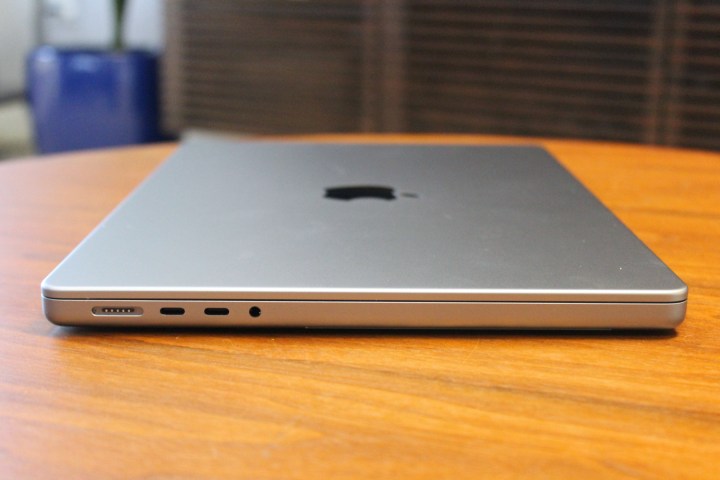
For example, compared to the M1 Pro in the 14-inch MacBook Pro, the M2 Max was 41% faster in applying GPU effects and 30% faster in exports. That might not sound all that impressive, considering it has well over twice the GPU cores. We’ve also tested the M1 Max in the 16-inch MacBook Pro with a 32-core GPU, and in that comparison, the generational advantage isn’t quite as clear. Exports were faster, but according to my data, the 16-inch M1 Max had smoother video playback and equivalent GPU performance.
As mentioned, the MacBook Pro is not a gaming laptop, but I wanted to confirm this graphics comparison in Shadows of the Tomb Raider. Again, the 16-inch MacBook Pro with the M1 Max actually outperforms the 14-inch M2 Max, with 84 frames per second(fps) versus 81 fps. I know that’s not exactly a one-to-one comparison, and if I were comparing the M1 Max versus the M2 Max both in the 14-inch MacBook Pro, we’d see the M2 Max in the lead. But obviously, the gulf between these two chips themselves isn’t as large as you might assume.
Apple’s 14-inch MacBook Pro remains the most powerful in its class.
Regardless, being able to play a AAA game like Shadows of the Tomb Raider at 81 fps on a 14-inch MacBook Pro is impressive nonetheless — as is the laptop’s video-editing capability. Like with the M1 Max, you’ll need to buy a laptop (and likely a gaming laptop) with an RTX 3070 Ti to outdo it.
The RTX 40-series cards are coming this year, though, and will bring more 14-inch laptops with up to RTX 4090s in them. We’ll have to wait and see how those compare, but for now, Apple’s 14-inch MacBook Pro is the most powerful in its class.
Turn up the heat
Apple Silicon has been known for its extreme efficiency, which has resulted in MacBooks that run miraculously quietly and coolly. The M2 line, though, has cranked up the heat. And that’s the catch that comes with all this extra performance.
The architecture behind the M2 remains similar to the M1, using the same 5nm process node from TSMC, but pushing those same chips harder has a downside in heat. While running all the cores during Cinebench, multiple performance cores spiked up to a high of 105 degrees Celsius. That is very hot. The fans get pretty loud too, cranking up to over 5,000 RPMs (revolutions per minute) at times. Surface temperatures stayed cool enough, fortunately.

Compare that to the 2021 MacBook Pros, where on average, they are a bit lower. The 14-inch MacBook Pro M1 Pro we tested was on average around five degrees cooler, and the fans didn’t ramp up as loud. On the 16-inch MacBook Pro with the M1 Pro, temperatures were 10 degrees cooler and the fans spin at about half the speed. The result in both cases was less fan noise — and internal temperatures that feel a bit more sustainable long-term.
Of course, compared to the average Windows laptop that the 14-inch MacBook Pro competes against, the M2 Max is still a supremely cool and efficient chip. Competitors like the Razer Blade 14, Lenovo Slim 7 Pro X, even the Dell XPS 15 — all run much louder than the MacBook Pro, and even get much hotter to the touch.
Even better battery life
Aside from performance, battery life is the other major talking point about the 2023 MacBook Pro. It’s not often that a generational laptop upgrade can boast both better performance and longer battery life. But thanks to the extra efficiency cores, the 14-inch MacBook Pro with the M2 Max manages to do it.
I’m getting a couple more hours than the 2021 model, making it the longest-lasting MacBook I’ve ever tested. It took 19 hours and 20 minutes to drain it completely while cycling through websites, and while you’ll get less in a normal workload, I had no problem getting through a day and a half of work without needing a charge.
It’s really incredible, and if you’re coming from an older MacBook or any competitive Windows laptop, you’ll be amazed by how long this thing lasts. I find that especially important for the 14-inch MacBook Pro since this is a more portable machine than the 16-inch size. I can’t imagine a better machine for a creator to take on the road with.
A solid next step
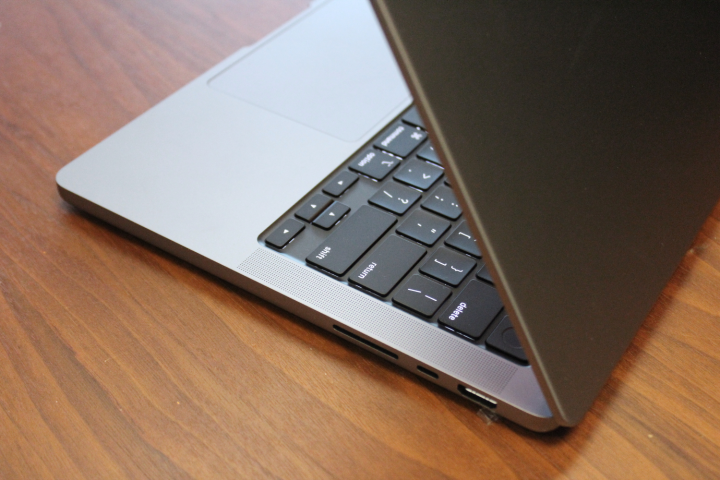
The 2021 MacBook Pro was a revelation. When it came out, it was the MacBook Pro we’ve always wanted Apple to make, undoing a lot of the mistakes that were made in previous years. The 2023 MacBook Pro doesn’t make many changes, but it doesn’t feel like it needed to just yet. Do I wish it had things like Face ID and a touchscreen — both of which could be coming in the future? Sure. But it’s been my favorite laptop in years, and it’ll be a couple more years before this design or feature set starts to feel in need of an update.
The only reason I dropped the score down from a 10 to a nine? The extra performance and battery life are great, but only a small minority of people will benefit from the jump up from the 2021 model. And there’s a trade-off in internal temperature and fan noise, which feels like a step back.
If you’re hoping to upgrade to a MacBook Pro this year, I’d check prices on M1 Pro or M1 Max models before picking up one of the new ones. Usually when it comes to tech, I recommend buying the newest thing possible — but in this case, if you can save a few hundred bucks on a cheaper model, that’s probably the better option.
Editors' Recommendations
- The XPS 16 is fighting an uphill battle against the MacBook Pro
- MacBook Pro 16 vs. MacBook Pro 14: The important differences
- Best laptop deals: Save on the Dell XPS 14, MacBook Pro 16 and more
- Best Apple deals: Save on AirPods, Apple Watch, iPad, MacBook
- The MacBook Air 15 vs. MacBook Pro 14: the easy way to decide

